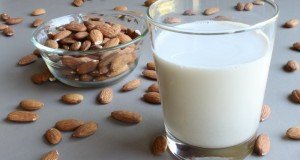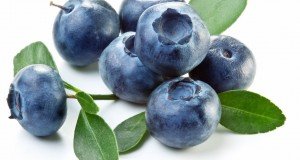Leafy greens linked to a LOWER risk of macular degeneration
(NaturalHealth365) Macular degeneration, a leading cause of vision loss in Americans 60 years and older, affects as many as 11 million people in the United States – and experts predict the number will double to almost 22 million by 2050. Now, new research shows that you may be able to lower your odds of developing this potentially debilitating eye condition by the simple act of eating leafy greens.
The surprising truth is: researchers say that leafy greens owe much of their vision-protecting value to their high content of nitrates. Once considered dangerous to health, nitrates are now being shown by evolving research to possess important health benefits. Let’s take a closer look at the studies – and the intriguing “twist” in perception that is causing these once-questionable compounds to be viewed as health heroes.
The research on nitrates in leafy greens challenges conventional ‘wisdom’
Nitrates, also known as sodium nitrates and NO3, are found naturally in soil (and in the vegetables that grow from it).
However, nitrates – after being chemically reduced to nitrites (or N02) — are commonly added to meats to preserve color and freshness. Both nitrates and nitrites have been a health concern because they can increase the formation of (possibly carcinogenic) N-nitroso compounds in the body.
Editor’s note: Just for the record, this article is not intended to suggest that eating hot dogs and other conventionally-produced, processed meats are ‘good for you.’ If fact, if you want to protect your health, avoid these foods – which are loaded with unwanted synthetic hormones and antibiotics.
But evidence of actual harm from nitrates is sparse, and recent studies have challenged this belief that they are dangerous. What is known is this: the conversion of dietary nitrate and nitrite to nitric oxide is a beneficial process that dilates and relaxes arteries, lowers blood pressure, and may even prevent heart disease.
In a review published in 2013 in Journal of the Academy of Nutrition and Dietetics, the authors cited a study which showed that dietary nitrates from beets can dramatically boost athletic performance.
In the words of the scientists, nitrates “acutely improve running performance.”
At this point, the scientific consensus appears to be: nitrates that occur naturally in vegetables are beneficial. However (again), to be on the safe side, cancer prevention guidelines suggests avoiding the intake of processed meats – which have nitrates but, many other unhealthy ingredients.
Risk factors for macular degeneration include age, smoking, obesity and a poor diet
Age-related macular degeneration (AMD), which affects the retina at the back of the eyeball, impedes central vision. Symptoms include blurry vision, dark spots, distortions, wavy lines, and colors appearing “washed-out” or faded.
Age-related macular degeneration currently affects 2.1 percent of Americans over 40, with the risk increasing to 30 percent for those over 75. Risk factors for age-related macular degeneration include being over 60, being overweight and smoking cigarettes (in fact, smokers have quadruple the risk of developing AMD compared to those who never smoked).
Having high blood pressure, high cholesterol, being Caucasian and having a family history of the disease can also raise risk. Of course, diet plays an important role, with studies showing that consuming large amounts of (toxic) saturated fats raises risk.
On the other hand, consumption of certain foods may lower risk – and this is where leafy greens come in.
Health ALERT: Studies reveal powerful benefits of dietary nitrates for eye health
In a 15-year longitudinal study published in Journal of the Academy of Nutrition and Dietetics, researchers evaluated the effects of vegetable nitrates on the odds of developing macular degeneration in over 2,000 Australian adults aged over 49.
The study, the first of its kind, yielded eye-opening results – no pun intended.
The team found that people who ate between 100 and 142 mg of vegetable nitrates daily had a 35 percent lower chance of developing early AMD than people who ate less than 69 mg a day.
Study leader Bamini Gopinath called eating leafy green vegetables and beets a “simple strategy” to reduce the risk of early AMD.
Important eye health NEWS: The value of nitrates in leafy greens
As if this weren’t reason enough to consume nitrate-rich vegetables, a recent study supports the ability of nitrates to protect against a type of eye disorder called primary open-angle glaucoma. Glaucoma involves the accumulation of fluid in the eye – which damages the optic nerves and causes vision loss at the periphery of the visual field.
In a study of over 100,000 participants over 40 published in JAMA Ophthalmology, researchers monitored dietary intake of nitrates and found that those who ate the highest amounts (about 240 mg a day) were 21 percent less likely to have developed glaucoma than those who consumed the lowest amounts (80 mg a day).
Significantly, 57 percent of the participants’ dietary nitrates came from leafy greens.
And the nitrate WINNER is … arugula
According to NutritionFacts.org, a non-commercial science-based public service provided by Dr. Michael Greger, leafy greens are (hands-down!) the vegetables with the highest nitrate content.
With 110 mg of nitrate per 100-gram serving, beets barely made the Top 10, trailing behind Swiss chard, oak leaf lettuce, beet greens, spring greens and basil.
Butterleaf lettuce – at 200 mg per serving – cilantro (257 mg) and rhubarb (281 mg) are outstanding sources of nitrates. But it is arugula, with an impressive 480 mg of nitrate per serving, that leads the pack.
Arugula, affectionately known as “rocket” lettuce, has a truly impressive health pedigree. This nutrient-dense green is actually a form of cruciferous vegetable – and as such, contains cancer-fighting components called isothiocyanates.
Arugula is also packed with vitamins A and K –as well as lutein and zeaxanthin, a pair of carotenoids that promote eye health.
Arugula’s zesty, peppery flavor makes it a standout addition to a classic mixed green salad. Add it to wraps, soups, stews and pasta dishes, or pair it with a little goat cheese for a tasty appetizer.
With the new studies highlighting the effects of leafy greens, protecting yourself from early age-related macular degeneration is turning out to be simple, healthful, inexpensive – and delicious!
Sources for this article include:
MedicalXpress.com
LiveHealthy.chron.com
NutritionFacts.org
JANDonline.org











